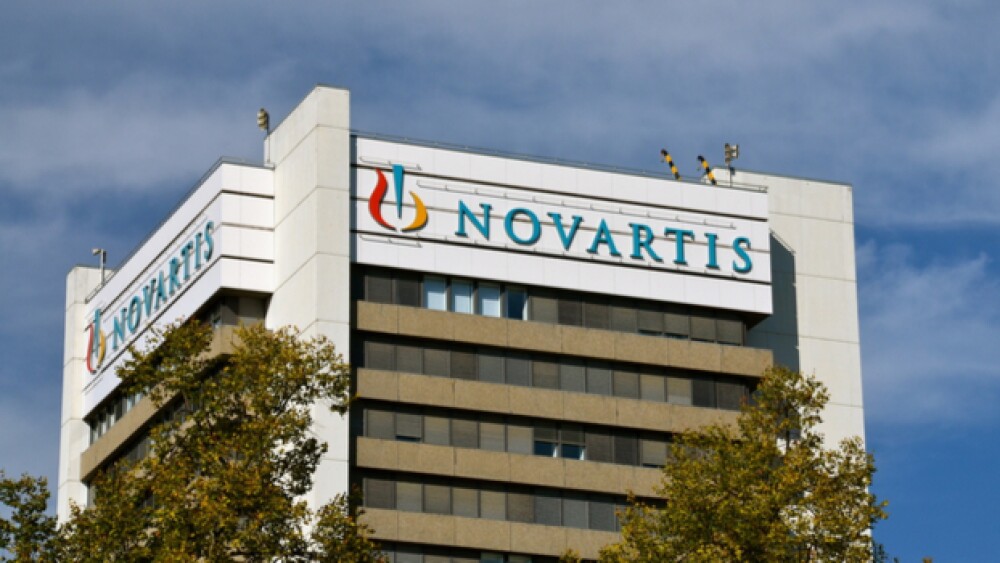AveXis presented new interim data from the Phase III SPR1NT trial of Zolgensma (onasemnogene abeparvovec-xioi) in spinal muscular atrophy (SMA) Type 1.
lucarista / Shutterstock
AveXis, a Novartis company, presented new interim data from the Phase III SPR1NT trial of Zolgensma (onasemnogene abeparvovec-xioi) in spinal muscular atrophy (SMA) Type 1.
The gene therapy was approved by the U.S. Food and Drug Administration (FDA) in May 2019 to treat children less than two years old with SMA that have bi-allelic mutations in the survival motor neuron 1 (SMN1) gene. SMA is a rare, autosomal recessive neuromuscular disease characterized by the degeneration of alpha motor neurons in the spinal cord. This results in progressive muscle weakness and paralysis. According to the Orphanet Journal of Rare Diseases, the estimated incidence is 1 in 6,000 to 1 in 10,000 live births.
The new data is in pre-symptomatic patients in addition to interim data from the STR1VE program. They showed positive outcomes, including age-appropriate major milestone gain with the treatment before symptoms and prolonged event-free survival.
“For families who never expected their children to reach meaningful motor milestones, the results we’re presenting at EPNS [2019 European Paediatric Neurology Society Congress] demonstrate the life-changing impact Zolgensma can have on children with SMA Type 1,” said Olgas Santiago, AveXis’ chief medical officer. “It is critical to diagnose SMA and begin treatment as early as possible in order to stop irreversible motor neuron loss and make the achievement of major motor milestones such as crawling, sitting and walking a possibility.”
The data is from the SPR1NT trial as of May 31. At that time, 10 children with two copies of SMN2, 12 patients with three copies of SMN2 and one with four copies were treated. The mean age in the two-copy group was 6.6 months at the last follow-up and in the three-copy cohort, 4.6 months. In those two groups, patients had completed their six-month swallow evaluation and had normal swallow function. Of the 22 patients in the study, all were alive and off permanent ventilation.
Zolgensma’s only competition is Biogen’s Spinraza (nusinersen). Both therapies come with some controversy over price and in the case of Zolgensma, a data manipulation scandal.
The current price for Spinraza is $750,000 for the first year and $375,000 for every year after for the life of the patient. It is approved for all forms of SMA, types 0 through 5.
Zolgensma has an approximate price of $2.1 million per patient. One difference is that Zolgensma is a one-time cure, while Spinraza requires repeated treatment. It’s rather difficult to put a price on a cure for a disease that is fatal in children, but that price tag does make it the most expensive therapy on the market.
Zolgensma is also approved for all SMA types. SMA type I, the severest form, is almost always fatal by two years of age, with a 50% mortality rate by seven months and a 90% mortality rate by 12 months. A 2009 study found that with nutritional and respiratory care, a greater percentage of those patients were living beyond two years of age. Patients with Types II and III typically live into adulthood and could potentially have a normal life expectancy, although with a great deal of healthcare services. But now, with Spinraza and Zolgensma, those patients have a chance of living a full, normal life.
The other controversy revolves around data manipulation on the part of AveXis. In early August, the FDA announced that the data involved in the preclinical approval process of Novartis’ gene therapy Zolgensma for spinal muscular atrophy (SMA) was manipulated.
In the original announcement, the FDA said AveXis informed the agency “about a data manipulation issue that impacts the accuracy of certain data from product testing performed in animals submitted in the biologics license application.” The data was used by the company to support the development of its production process, and the data does not seem to change the agency’s positive assessment of the information from the human clinical trials.
Reportedly the FDA has referred the matter to its Office of Criminal Investigations to launch a preliminary inquiry. Submitting false data to the FDA as part of a New Drug Application (NDA) could be a crime if the investigation finds the actions were intentional.
So far that action has included ousting five of the scientists involved in the scandal and appointing a new chief scientific officer for AveXis. AveXis has also parted ways with its scientific founder and chief scientific officer. Brian Kaspar, chief scientific officer, and Allan Kaspar, the company’s head of research and development, are no longer with the company and, according to AveXis, have not been involved in AveXis operations since May.
Of the new data, Eugenio Mercury, Department of Pediatric Neurology, Catholic University, Rome, Italy, said, “These updated data reinforce what we have seen in other Zolgensma studies, including survival of children with SMA Type 1 who would have in the past died or required permanent ventilation before the age of two. We are seeing further robust evidence of the potential of gene therapy to effectively halt motor neuron loss, help patients achieve motor milestones and alter the course of SMA with a one-time treatment.”





